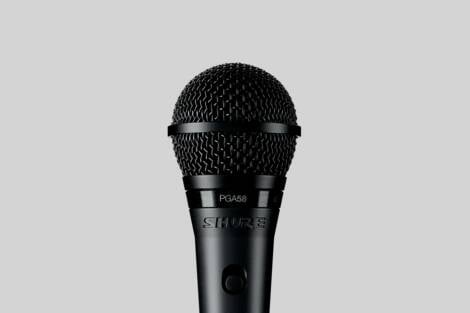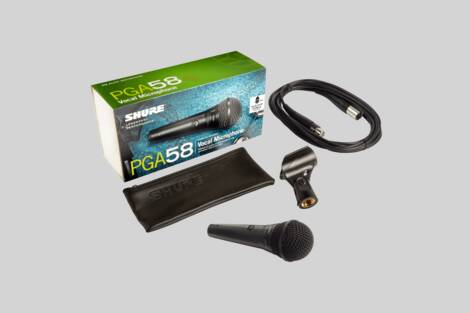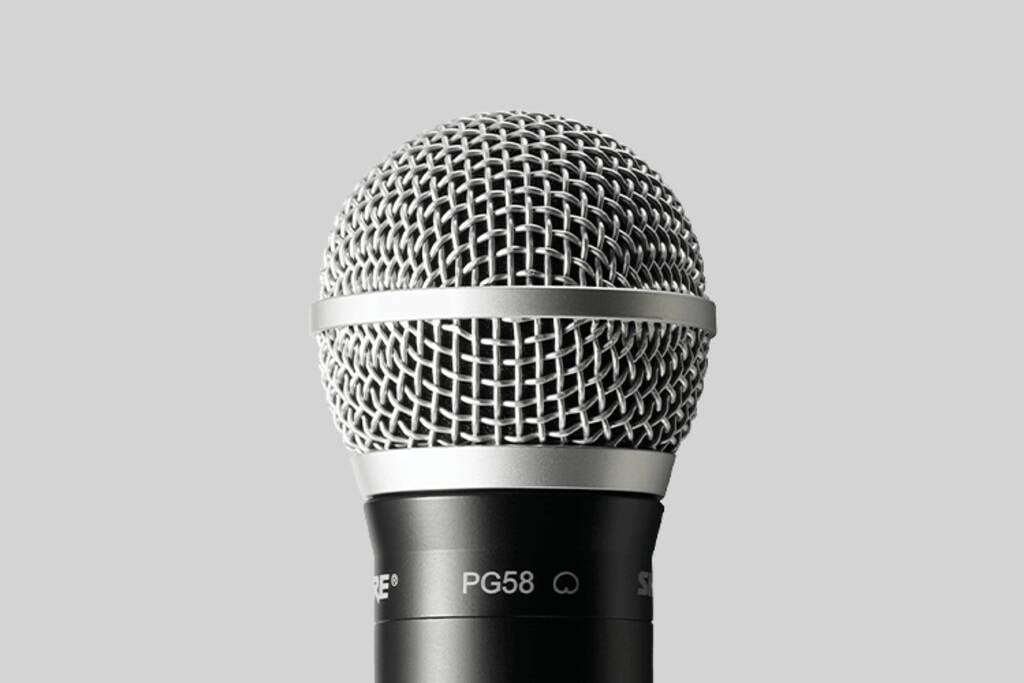Cardioid dynamic vocal microphone delivers excellent sound for lead and backup vocal performance. The product includes a stand adapter, an on and off switch, and rejection of unwanted noise due to the cardioid pattern.
Main Features
Main Features
- Tailored microphone cartridge design for natural clarity in the frequency range of vocal performance
- Cardioid polar pattern picks up audio from the source while rejecting unwanted noise
- Updated industrial design with black metallic finish and grille for unobtrusive visual presence
- On/Off switch for discrete control of microphone operation
- Stand adapter for mounting to a microphone stand
- Legendary Shure quality design and construction for exceptional performance in rigorous environments
Description
Furnished Accessories
Furnished Accessories

| Amount | Part Title |
|---|---|
| 1 | Stand adapter |
| 1 | Zipper pouch |
| 1 | XLR-XLR cable (PGA58-XLR-E) |
| 1 | XLR-QTR cable (PGA58-QTR-E) |
Available Variants
Available Variants
PGA58-QTR-E
RRP from*
£79.00
PGA58-XLR-E
RRP from*
£79.00
PGA58BTS
RRP from*
£99.00
* Recommended Retail Price from
Specs
Specs
Technical specifications
Weight:
294
g
Frequency Response:
50 Hz – 16 kHz
Frequency Response:
Tailored
Sensitivity:
-55.00 dBV/Pa – 1.79 mV/Pa
Transducer Type:
Dynamic
Polar Pattern:
Cardioid
Switchable low cut:
No
Connectors:
3 Pin XLR
Attenuator:
No
Interchangeable Capsule:
No
Main Functionality:
Performance
Headphone Output:
No
Cartridge:
Fixed
Downloads
Downloads
Brochures
Declaration of Conformity
User Guides
Comparable products
Comparable products
Optional accessories
Optional accessories
faq
How do I connect this mic to my computer?
You’ll need a special soundcard that features XLR inputs or an audio interface such as the MVi or X2U. These devices allow you to bypass the computers soundcard and connect a professional microphone to your computer via USB. As they are plug and play devices you don’t need any additional drivers. Note that the MVi can also be used to make a connection to iDevices like iPads.
How does it differ to the PG58?
The PGA58 has a new look and switch.
How does it differ to the PGA57?
The PGA58 is designed for speech and vocal applications whereas the PGA57 is specifically designed to meet instrument applications.
How does it differ to the SM58?
The performance of the SM series is better, when comparing frequency response, polar response, handling noise, transient response, etc. They both pass the same drop and environmental tests.
Full list of Shure technical questions and answers



